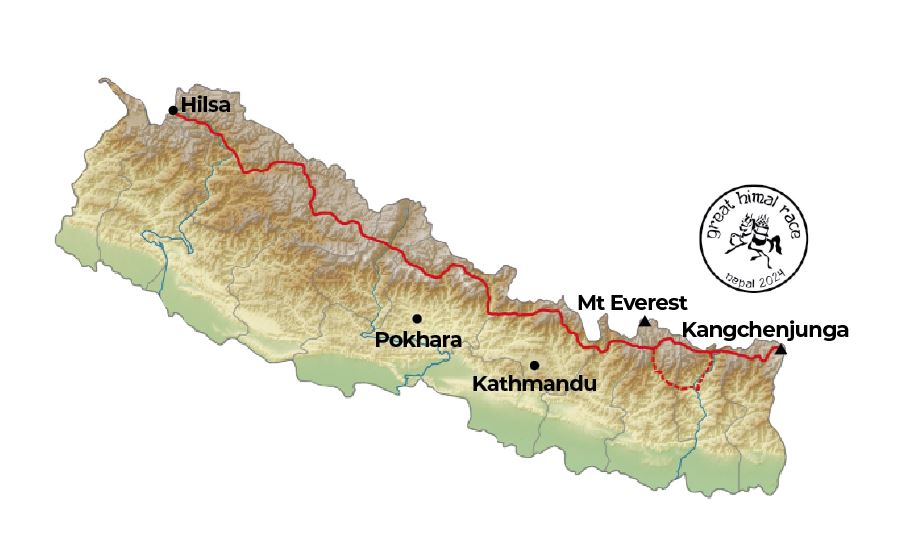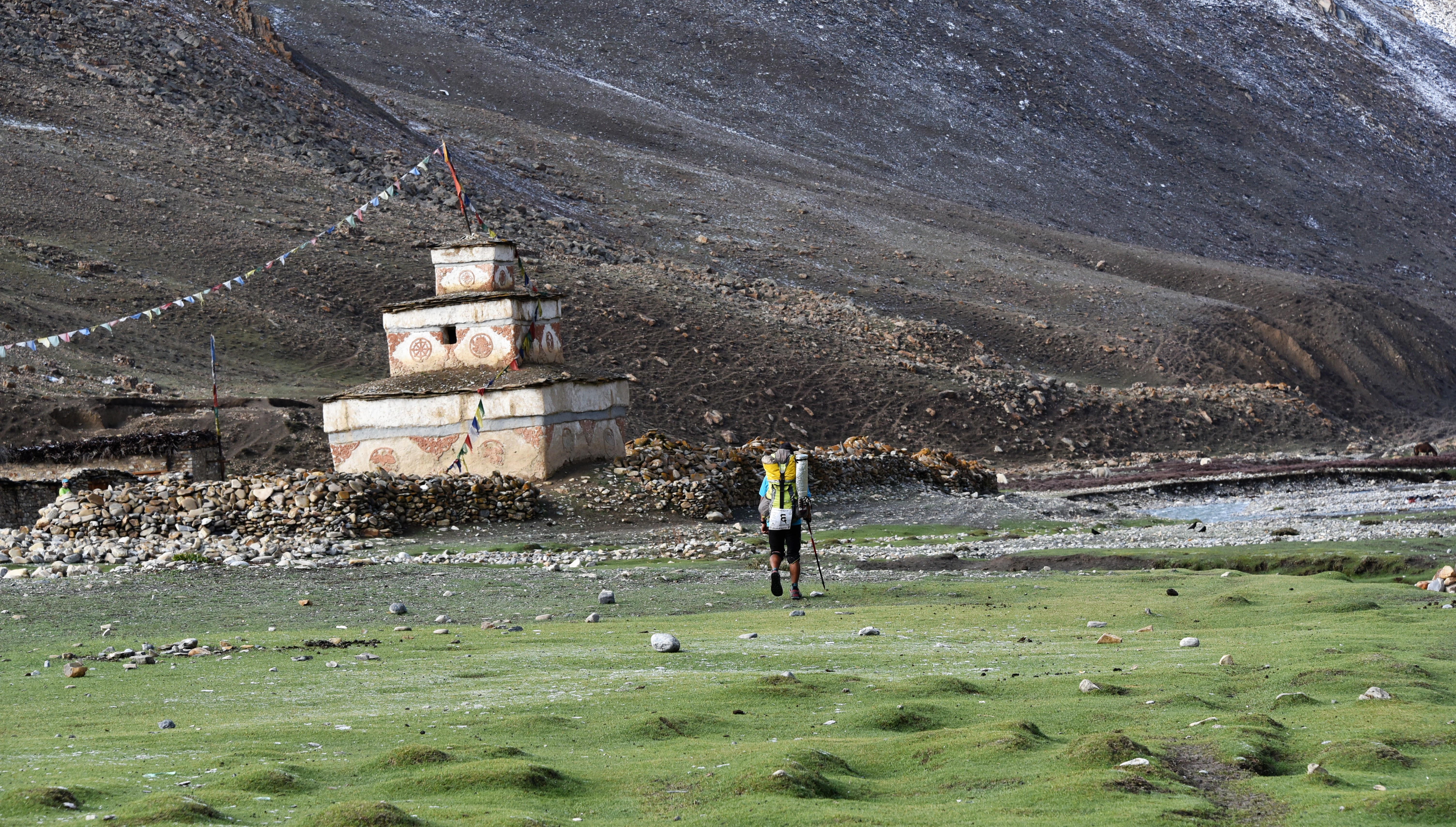Hurtling through the Himalaya
44 ultra-runners to race west to east across the Great Himalayan trail in 60 daysOnly the most adventurous attempt to walk The Great Himalayan Trail (GHT), even fewer dare to run all of its 1,800km from one end of Nepal to another. And it is not just the horizontal distance – the trail is a vertical roller coaster from 1,500m to 5,600m.
This week, 44 international and Nepali runners are joining The Great Himalayan Race that roughly follows the GHT in a 51-stage hyper-marathon that will take nearly two months.
The Great Himalayan Race was first staged in 2017, and pushes the mind and body to absolute limits in a one of the hardest endurance tests in the world of sports.

What makes this race special is that every step of the way, they will have sunset and sunrise views that transform the snow peaks into purple and gold. The runners will be passing sacred, isolated Himalayan valleys rich in heritage.
The particpants arrived in Kathmandu this week, and will fly out to Nepalganj and Simikot and then on to Hilsa on the Nepal’s northwestern tip bordering China to start the race on 9 April. On Thursday morning, race director Bruno Poirier, a tall, grizzly man, was briefing the runners in his French accented English.
“Be prepared to change plans if the unexpected happens,” Poirier tells them. “It is an individual sport, but we also need to look out for each other.”
The split between Nepalis and foreigners is about half and half, and most are middle-aged. Lean and fit with striated, veiny calves, these are obviously serious runners. They sport a wide variety of headwear: hats, visors, bandanas, snoods. Visitors are in shorts, but most Nepalis are in jeans with colourful running shoes. Many don wrap-around sunglasses.

There is no easing into this race. The first stage is 41km, virtually a marathon. From Hilsa at 3,650m, runners will climb to Nara Lagna at 4,580m, and drop back down to Taplung at 2,880m. The race will get as high as 5,694m at Ghami La in Mustang during Stage 15, on Day 22.
Runners will get to Muktinath on Day 27, and Manang on Day 30, exactly halfway into the race. On Day 41, they will be at the Last Resort on the banks of the Bhote Kosi northeast of Kathmandu. On Day 60, Stage 51, they will finally reach Kanchenjunga Base Camp at 5,143m on 31 May if everything goes to plan.

Nervous excitement is palpable among the runners. The race will take them through 27 high passes in the Himalaya, most of them above 5,000m elevation. Weather up there can change dramatically and suddenly, and participants will have to improvise, take new routes and even find places to take shelter.
Vincent Minier from France completed the race in 2017, and tells us: “It’s like parachuting. The first jump is always the scariest.”
French organisers of the race have a slightly laissez-faire approach to safety, attests Jagan Timilsana, winner of the 2017 race. Which means they will get along with the happy-go-lucky Nepalis.
Greek couple Lazaros Rigos and Asimina Inglezou say the reason they signed up was because of the history and the mystique of the Himalaya. Also in the cohort are accomplished Nepali long distance runners Upendra Sunuwar, Bhim Bahadur Gurung, and Sher Tharu. While Sunuwar and Gurung also took part in 2017, it is Tharu’s first attempt in the competition.
“It’s a hard race but when you finish it, it is the best feeling in the world,” says Sunuwar.

Swiss runner Jules-Henri Gabioud is in Nepal for the seventh time, and ran the race in 2017. He runs in the Alps and says the biggest difference is that the Himalaya is higher and rougher, the huts along the way do not have heating, and the food is basic. “I like dal-bhat but it can get a little monotonous,” he says.
Lazaros Rigos from Greece agrees: “There are some ingredients missing: protein, vitamins and minerals. You have to supplement these, so your stamina holds up.”
Rest and recovery after a gruelling stage consists of food, a wash, perhaps a couple beers, and good sleep. The runners also have to carry backpacks with sleeping bags, heavy jackets, meal packs, and first aid kits weighing upto 20kg throughout the race.
Jagan Timilsina is from Sarangkot and won the 2017 race a whole 45-hours faster than anyone else. He now runs several businesses, including Himalayan Trail Running, and spends his summers teaching outdoor leadership in Alaska.

He tells us, “The physical part of the race in 2017 was manageable, but as a Nepali for me it was an opportunity to see the culture and the beauty of the untouched and remote Himalayan valleys.”
In 1983, British cousins Richard and Adrian Crane ran across the Himalaya from east of Kanchenjunga to west of Nanga Parbat, taking 100 days. Forty years since, Nepal is capitalising on the growing interest in ultra-running and adventure sports worldwide.
Timilsina is familiar with the challenges of organising a trail race, and says Nepal’s bureaucracy is the biggest hurdle for adventure sports like the Himalayan race.
He adds: “Visitors need multiple permits from multiple committees. Policies regarding running tourism are outdated, and arduous to change.”
writer
